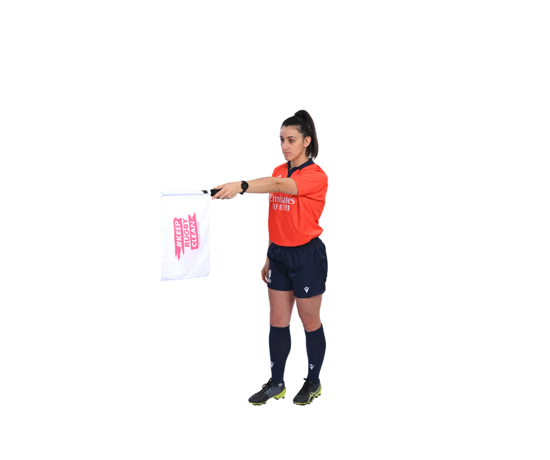Signalling and communication
The playing field can be a large and noisy space. Communication between Assistant Referees positioned on the sidelines and the Referee in the field of play is often done using signals. Where possible, flags should be used by the Assistant Referees.
It is becoming more common for the team of three to use communications technology (earpieces and microphones) to relay messages or decisions to each other.
If the Referee looks at the Assistant Referee to seek assistance or confirmation of a possible player action, the Assistant Referee can use hand gestures to communicate. For example, a discreet knock-on signal (at chest height) to show the Referee that a player has knocked the ball on.
Touch/Touch-in-goal signal

Touch - indicating team throwing in signal

Successful kick at goal signal
Before signalling, the Assistant Referees should communicate with each other to confirm a decision before raising/not raising their flags. If there is a difference of opinion, the Referee makes the final decision.
Foul play signal

When communicating with the Referee, Assistant Referees should endeavour to be accuate, brief and clear. The Referee may ask for a recommendation on an appropriate sanction for an offence.
